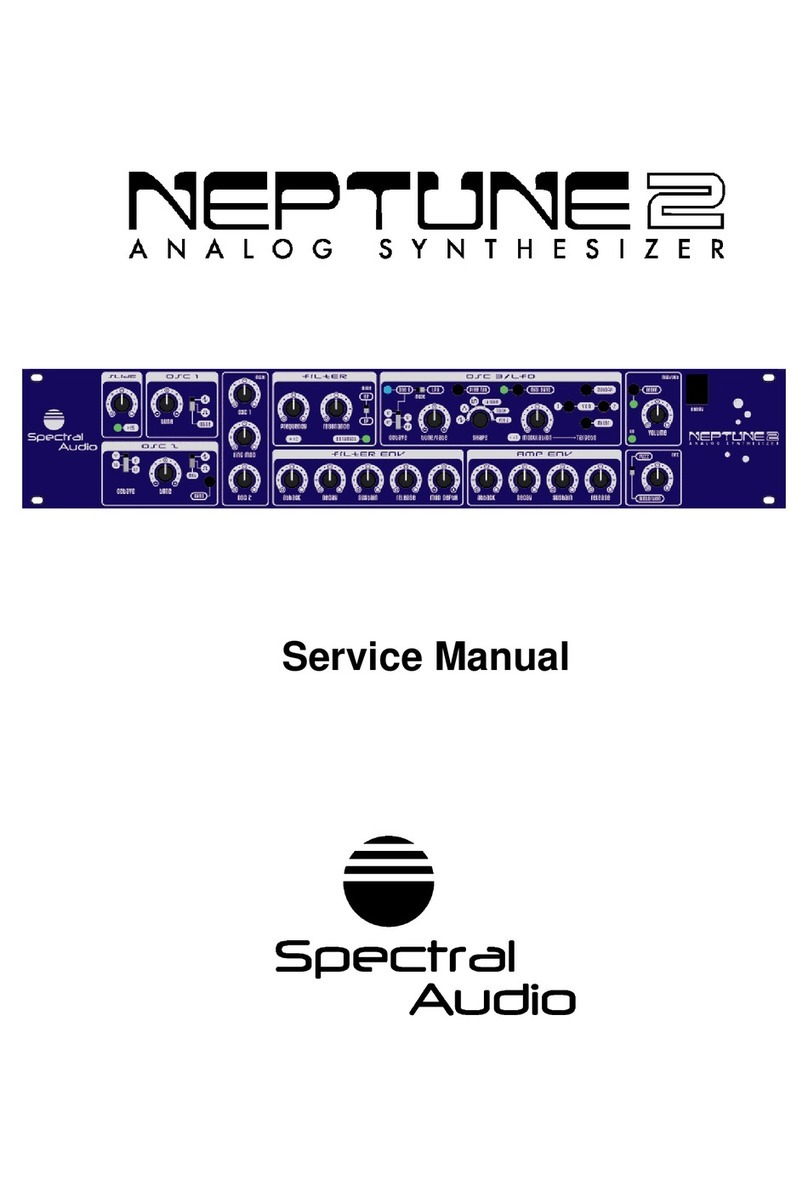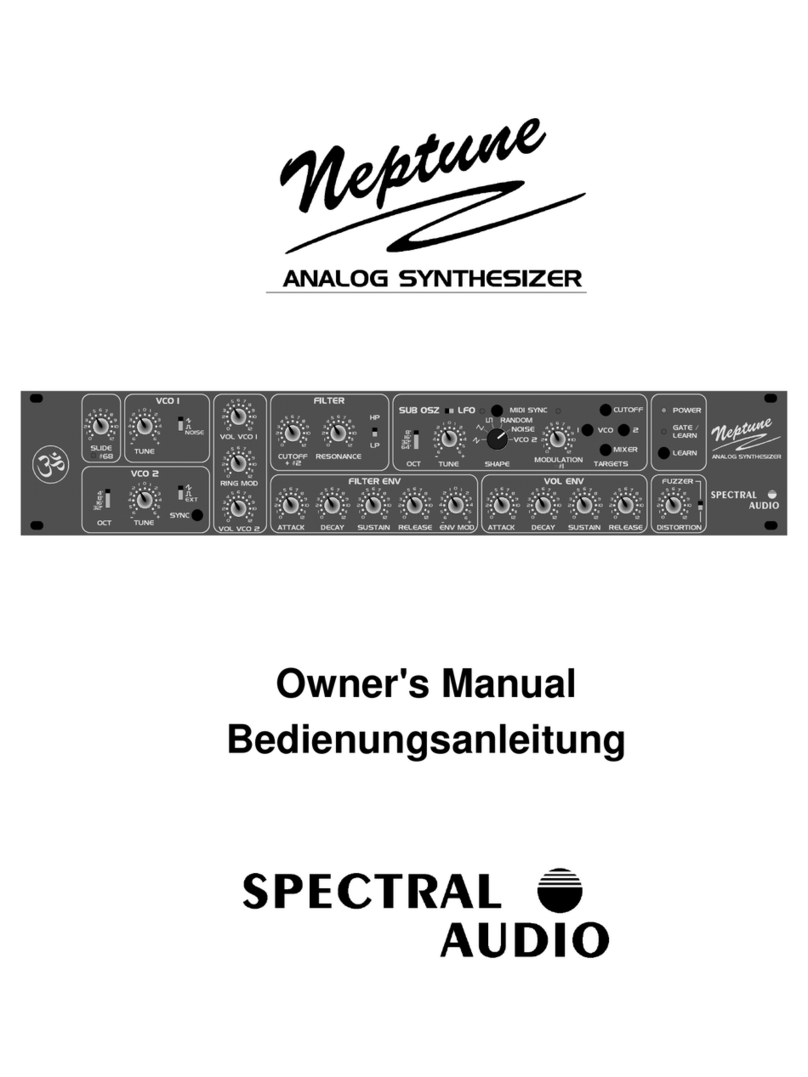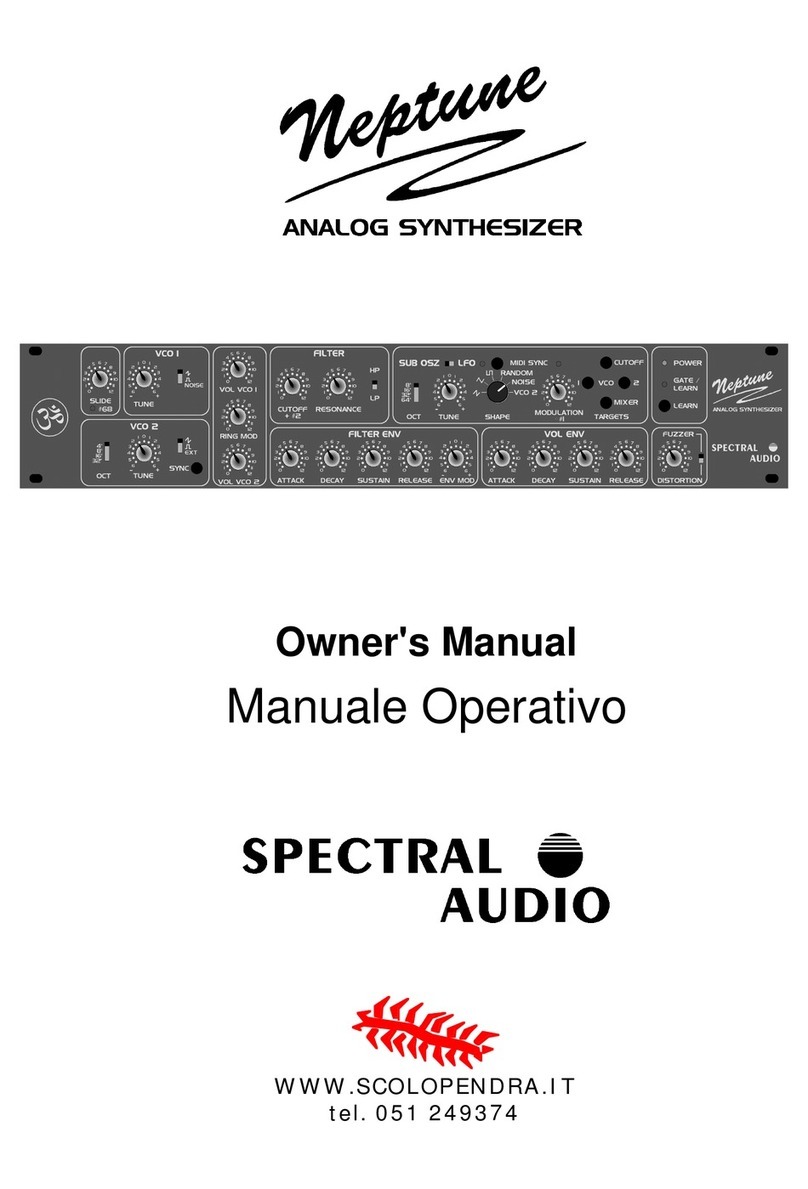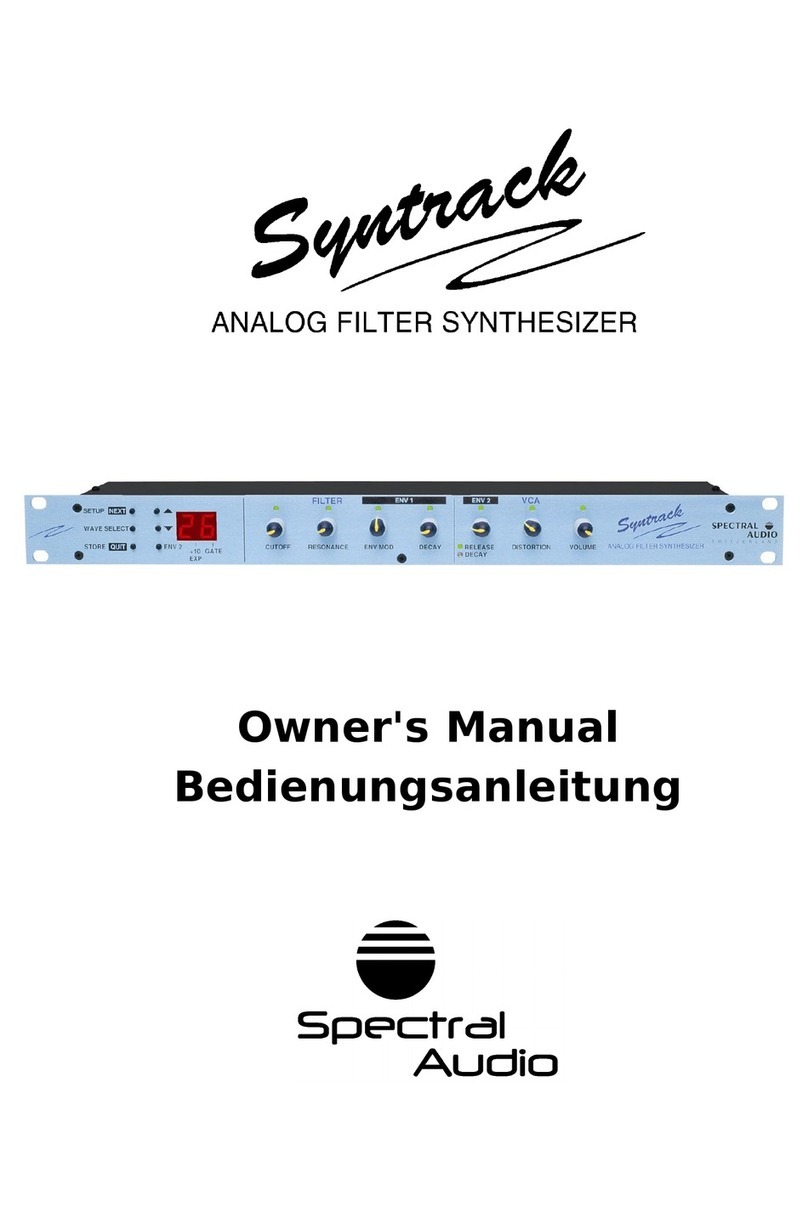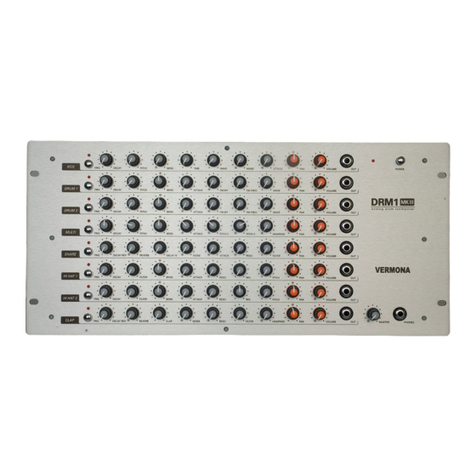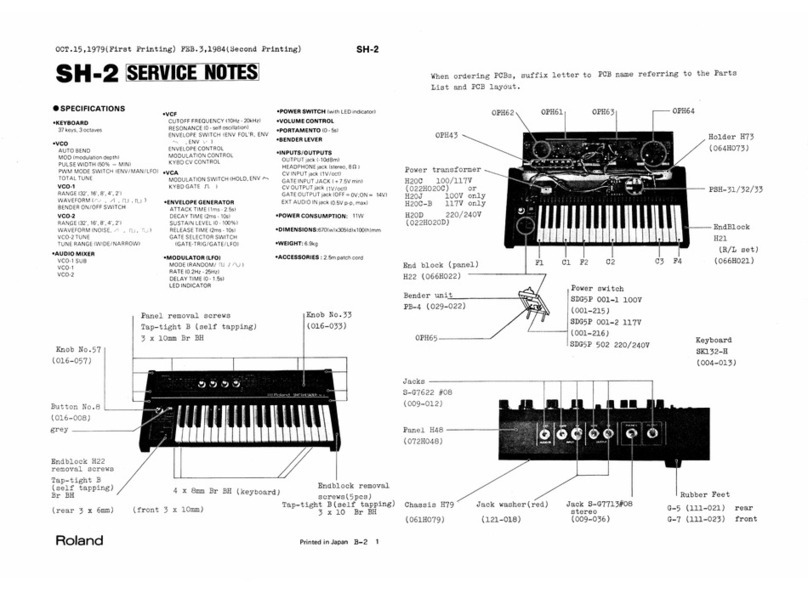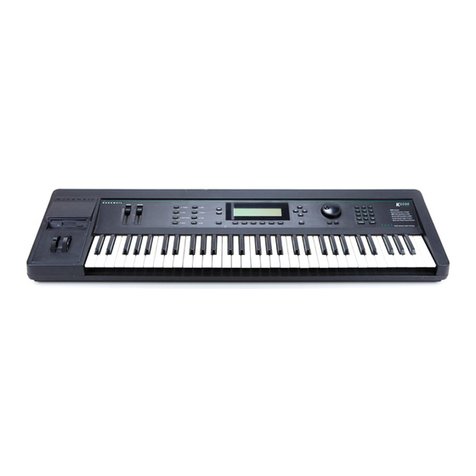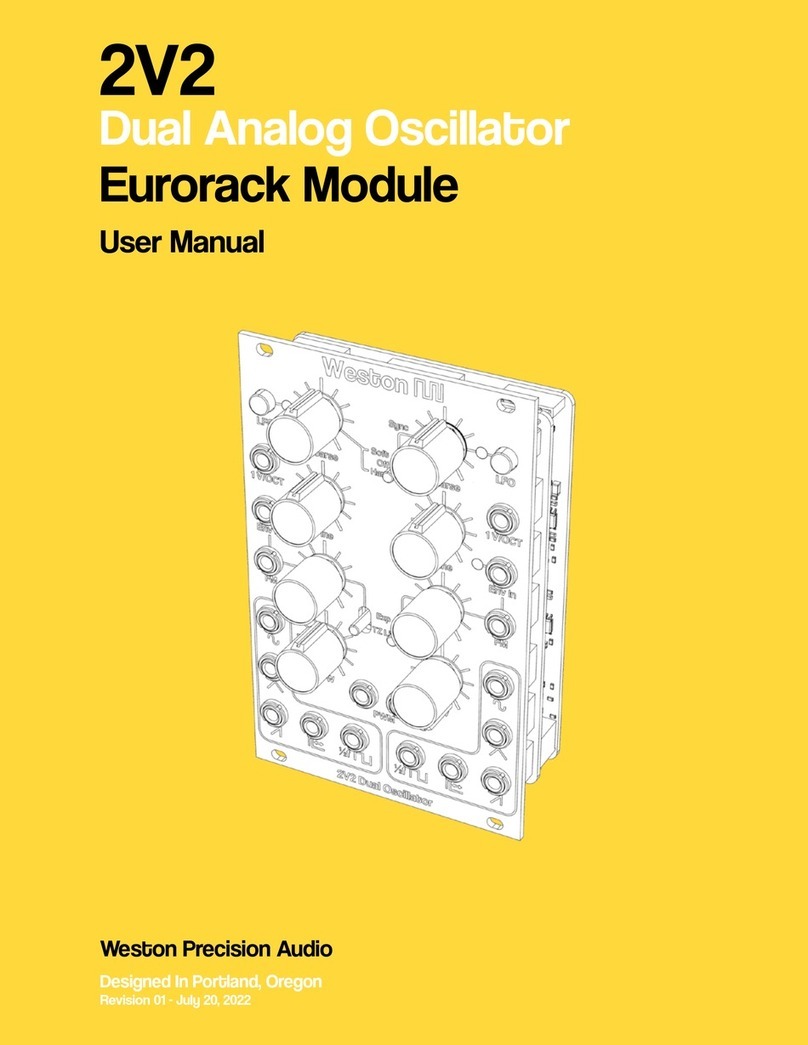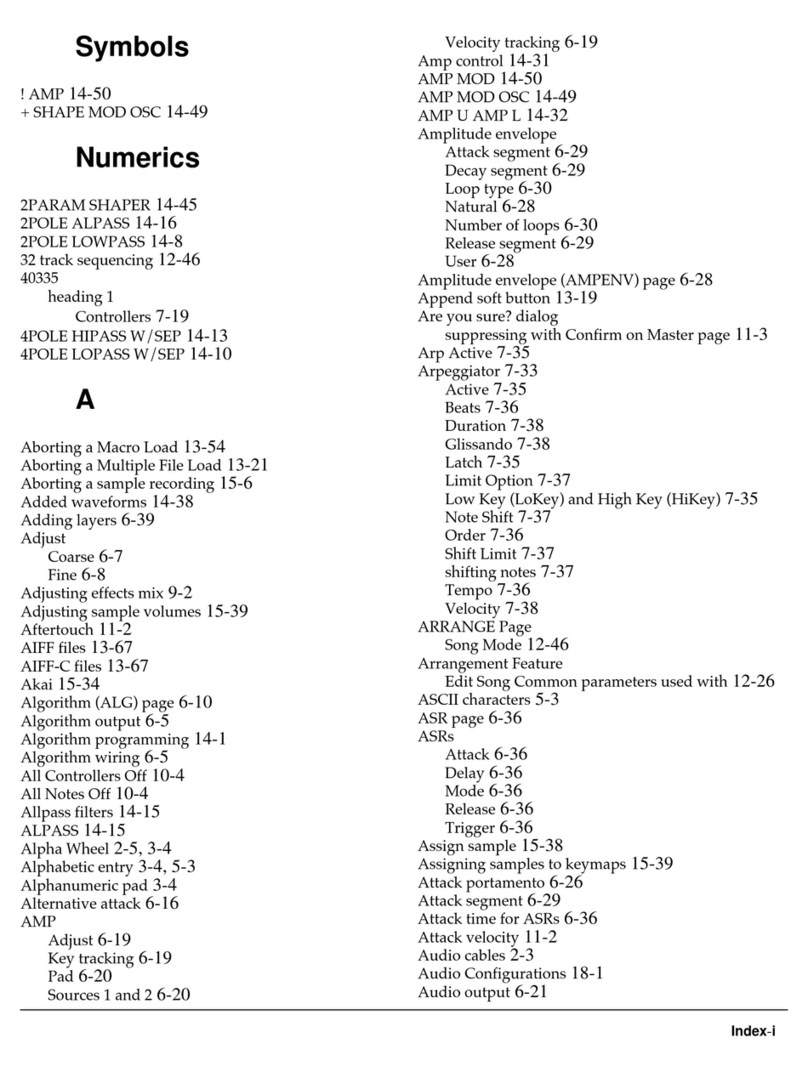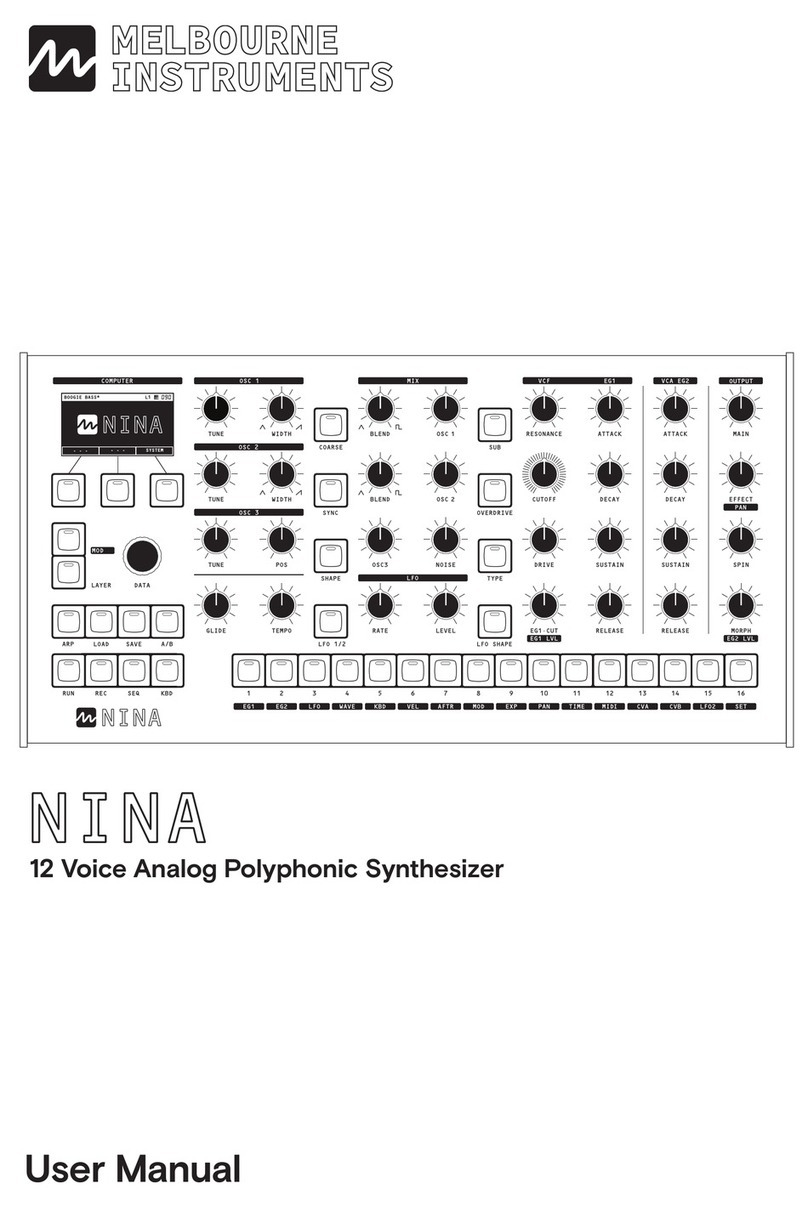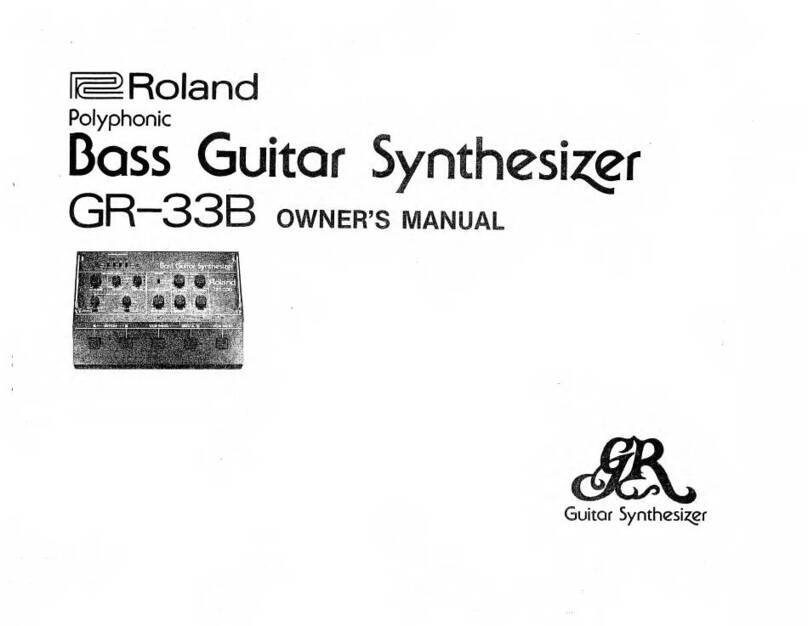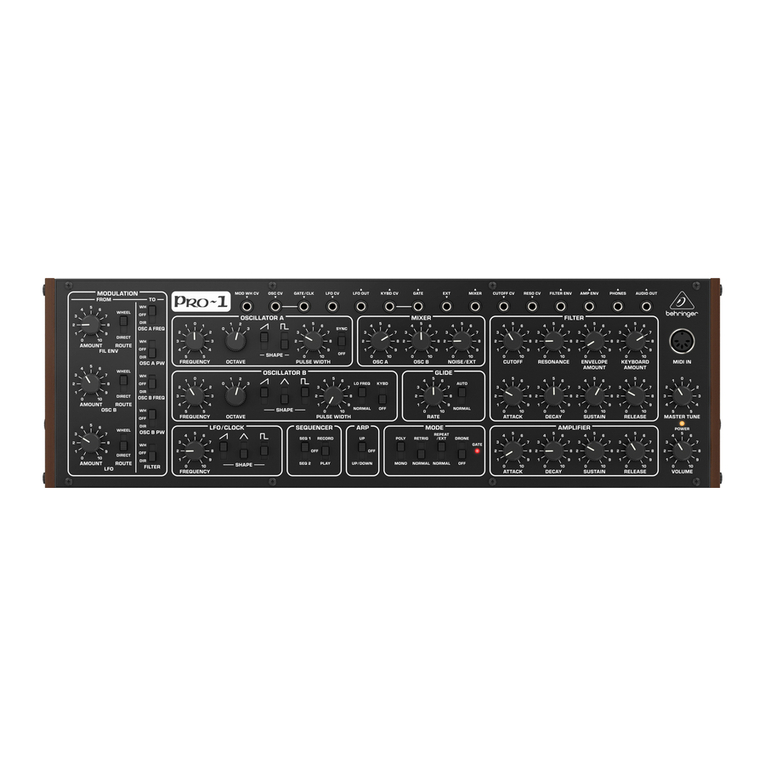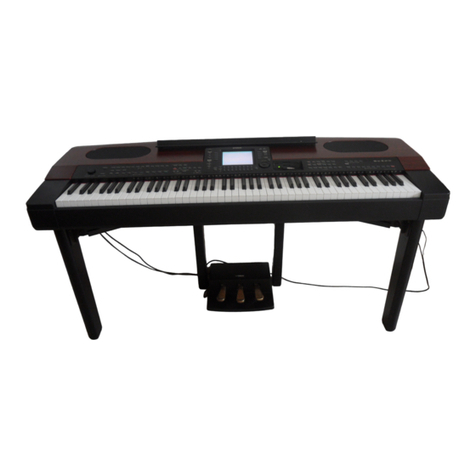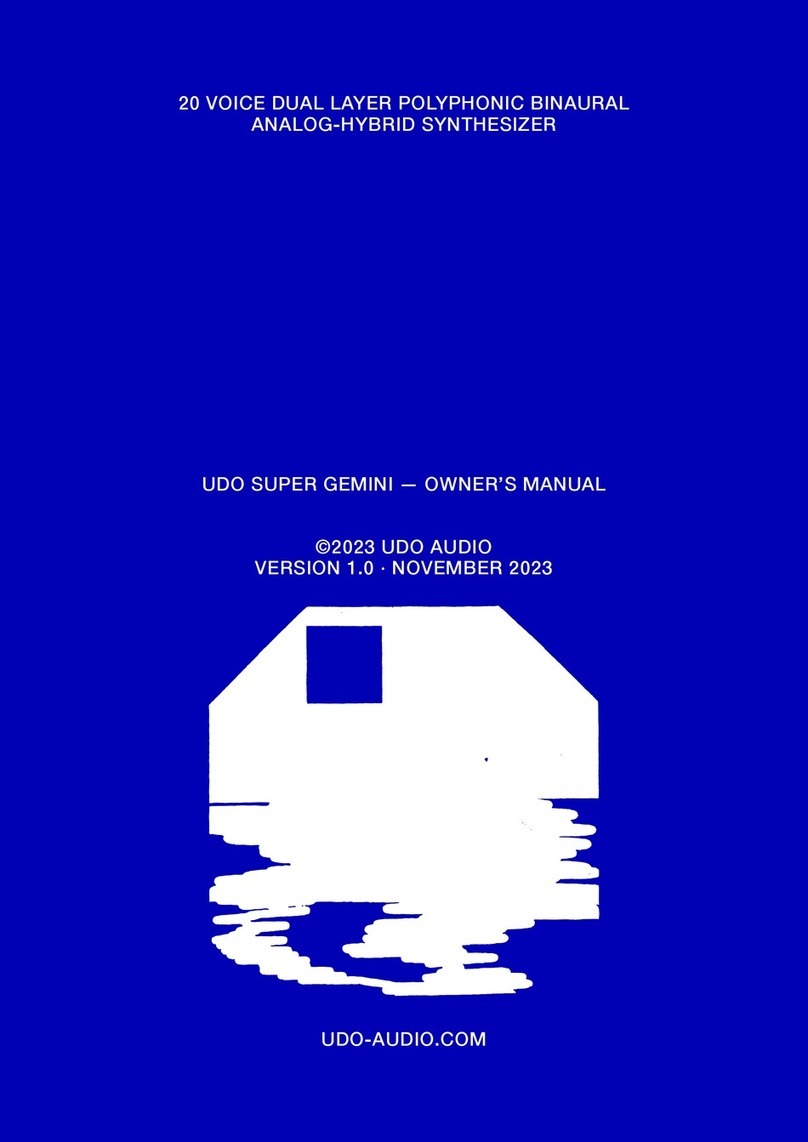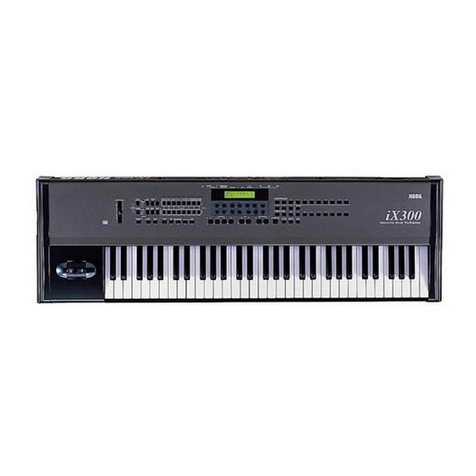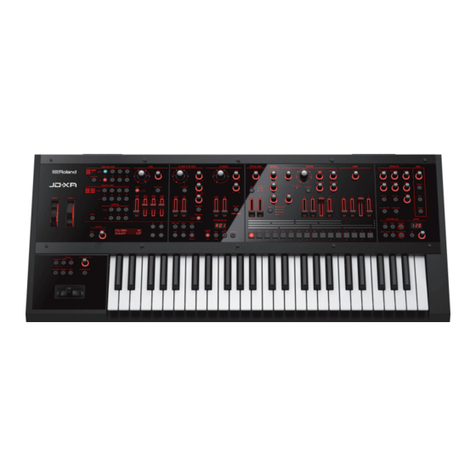Spectral Audio Neptune 2 User manual

Owner's Manual

3DJH
Contents
1Introduction ...............................................................................................................................................2
2Environment care......................................................................................................................................2
3Neptune II .................................................................................................................................................2
4Performance and Signals of Neptune II:...................................................................................................3
5Operating and safety instructions .............................................................................................................4
6Guarantee.................................................................................................................................................4
7Operational and functional description......................................................................................................5
7.1 The Neptune II Signal Flow: ..............................................................................................................6
7.2 Subtractive Synthesis (Theory)..........................................................................................................7
8Initial Start-up............................................................................................................................................7
8.1 Using the external audio input ...........................................................................................................7
8.2 Technical data of the CV and GATE In-/ Output ..............................................................................7
9Trouble-shooting / FAQ.............................................................................................................................8
10 MIDI Functions ......................................................................................................................................8
10.1 Normal operating mode .....................................................................................................................8
10.2 Learn mode........................................................................................................................................9
10.2.1 Note-On Command (key is pressed):.....................................................................................9
10.2.2 Program Change Command:..................................................................................................9
10.3 Re-trigger...........................................................................................................................................9
10.4 Filter Dynamic Operation...................................................................................................................9
10.5 Filter Velocity mode .........................................................................................................................10
10.6 Aftertouch to Cutoff..........................................................................................................................10
10.7 Aftertouch to Modulation..................................................................................................................10
11 Possible manual changes ...................................................................................................................10
12 Notes...................................................................................................................................................10
12.1 Service via Internet..........................................................................................................................10
13 MIDI Implementation Chart .................................................................................................................11
14 Technical Data Neptune II...................................................................................................................12
15 Neptune II Sounds...............................................................................................................................12

3DJH
1Introduction
Thank you very much for buying the Neptune II Analogue Synthesizer.
The Neptune II is a purely analog synthesizer with MIDI and CV control. It offers special features and is simple to
use because it has a button or switch for each parameter.
The audio input enables processing of external signals.
In order to use the Neptune II professionally, we recommend that the following chapters are read carefully.
We wish you much pleasure and many successful productions using the Neptune II!
This manual has been produced with the greatest care. Spectral Audio is nevertheless unable to accept any
responsibility for errors or omissions. Reproduction is permitted only with the consent of the manufacturer.
2Environment care
The Neptune II is made as environmentally friendly as possible. This was a very important consideration in the
design process. Specifically, this means that:
-the pads for the electronic components are as small as possible to save paste and solder
-the bottom casing is recyclable normal metal sheet
-the front panel and the lid are recyclable normal aluminum
-it is easy to disassemble
-the package materials are recyclable
3Neptune II
With the Neptune II, the original Neptune has been improved and carries several internal and general
improvements. The Neptune II benefits from these changes:
-significantly improved quality smooth potentiometers
-tactile soft touch knobs
-high efficiency 5mm LEDs
-2.2mm travel push switches for better visual feedback
-key follow switch, volume potentiometer and power on switch have been added
-free-run switch to have Oscillator 3 free of tracking the keyboard
-improved true noise generator with a spectrum now up to 100kHz
-several possibilities for additional operations via manual internal changes
The Neptune II shares these design features with the original Neptune:
-pure DC Design means no capacitors in the signal flow
-low noise design
-high quality cascade filter
-true noise generator (not digital noise)
-MIDI regeneration -incoming MIDI signal is internally regenerated to MIDI Thru, not just amplified.

3DJH
4Performance and Signals of Neptune II:
Sawtooth at 250Hz:
Sawtooth Spectrum:
all three VCOs provide the same excellent signal quality
Noise:

3DJH
Noise Spectrum: 20Hz..20kHz
5Operating and safety instructions
The instrument is intended only for the form of use described in this operating manual. It is to be used in dry
rooms only. Do not allow any liquids to enter the instrument. Should this happen, the instrument requires
cleaning by a specialist.
Use only the original PSU (15VAC, 500mA).
Do not expose the instrument to direct sunlight. Do not use the instrument in the vicinity of a heater or any other
source of heat. Do not expose the instrument to temperatures above 50°C (degrees Celsius) or below 10°C.
The minimum operating temperature is 10°C. Handle the instrument with due care when transporting.
Use only the original packing when returning the instrument to our company for guarantee service, software
updating, repair work, etc. Other forms of delivery will not be accepted due to the danger of damage caused in
transit. Please make sure you retain the packing container and inner packing materials for such purposes.
6Guarantee
A one year guarantee period from the date of purchase applies for manufacturing defects. Should the instrument
be interfered with or abused in any way, the guarantee coverage will cease immediately.

3DJH
7Operational and functional description
The basic principle of the Neptune II corresponds to classic subtractive analog synthesis which incorporates
interconnection between a VCO, VCF, VCA, envelope generators and LFO.
To make the Neptune II suitable for MIDI, an additional MIDI to CV converter is added which converts the
MIDI signals into analog control voltage signals. These control the VCOs, the filter, as well as the envelope
generators. It is able to create Control Voltage (CV) for 5 octaves. However, the oscillators in the Neptune II
are able to process up to 7 octaves.
The raw material for the sound is provided by the VCOs (Voltage Controlled Oscillators, known as
OSC1..OSC3) in the form of a sawtooth or rectangular signal as well as the noise generator (for effects such
as wind and thunder sounds). OSC2 is synchronized to OSC1 with the SYNC switch. The sound becomes
especially interesting when the TUNE control of OSC2 is turned (or modulated by the LFO), resulting in the
typical "Sync-Sound". By means of the external OSC input, other sources can also serve as raw material. The
TUNE range is a good compromise between having a useful pitch range but still able to finely adjust the
pitch.
The ring modulator multiplies the signals of the two OSCs. This significantly amplifies the beats (frequency
difference).
Note: When the SYNC switch is switched on, no beats are developed and the ring modulator therefore has
no effect.
The SLIDE control determines the glide time from one note to another and is valid for all OSCs. It is possible
to switch the slide function on or off by using MIDI controller 65.
Afterwards, the signal flows through the Voltage Controlled Filter (VCF), within which certain frequency
ranges are suppressed. The lowpass filter allows low frequencies to pass and suppresses the high ones, the
highpass filter lets high frequencies pass and suppresses the low ones. The frequency from which the signals
are suppressed is called the limit or cut-off frequency. In the Neptune II, this is formed by various sources:
1. CUTOFF frequency control
2. ENV MOD control (the influence of the envelope curve on the cut-off frequency)
3. OSC3/LFO when the Cut-off target push switch is on
4. KEYFOLLOW.
The KEYFOLLOW may be set to no KEYFOLLOW, 50% or 100%. It causes the cut-off frequency to increase
on higher notes so that the audible frequency band always remains the same. Moreover the filter can be used
as an oscillator, if the resonance is set to the maximum. The resonance forms a feedback of the output to the
input of the filter and causes an amplification of the frequencies around the cut-off frequency. The Filter is
adjusted for exact tone scale.
After the filter, the signal reaches the distorter circuit, which provides two different types of distortion: Fuzz
distortion or clipping distortion, both known from (olden day) guitar effects units. Before the signal leaves the
Neptune II, it arrives at the VCA (Voltage Controlled Amplifier). The input signal is here multiplied by the
control signal formed by the Amp Envelope and the VOLUME potentiometer.
The OSC3/LFO is particularly well designed in the Neptune II. The oscillator is either freely controllable or
fixed to the MIDI to CV converter. The desired mode may be chosen using the FREERUN switch. Note:
When using the OSC3/LFO in LFO mode, the description at the OCTAVE switch does not apply. It is
however possible to adjust a coarse frequency. Using its signal, the pitch from OSC1 and OSC2 and also the
Cut-off frequency of the filter can be modulated. If the MIXER switch is on, the OSC3/LFO output is directly
audible. In this case, the MODULATION pot controls the volume level.
The rotary switch allows 5 different signal forms to be selected. Additionally, the OSC2 can be used as a
modulation source. The MIDI SYNC switch allows the LFO to be synchronized to MIDI Clock.

3DJH
The Envelope Generator determines the chronological sequence of the volume after receiving a ‘note-on’
command. The MIDI to CV converter then issues a gate signal (+5V) starting the sequence of the envelope
generator. The gate signal remains active at +5V until the ‘note-off' command comes, i.e., when the key is
released:
7.1 The Neptune II Signal Flow:

3DJH
7.2 Subtractive Synthesis (Theory)
The VCOs produce very harmonic rectangular and sawtooth signals:
Noise contains an endless number of frequencies. The frequency spectrum is subsequently limited by the
filter:
The setting of the resonance control is an important factor as it amplifies the frequencies around the cut-off
frequency:
8Initial Start-up
Connect the MIDI IN socket on the Neptune II to your MIDI controller (master keyboard, sequencer, etc.) via
a MIDI cable. If further MIDI units are used after the Neptune II, connect the MIDI Thru socket to the MIDI IN
socket of the next device using another MIDI cable.
Connect the audio output to the audio input of your sound mixer, amplifier or similar equipment.
Connect the power adapter PSU.
Switch on the Neptune II. The LEARN indicator should light briefly. The power ON indicator and the SLIDE
indicator will light up. Set the potentiometers to one of the Neptune II sounds below. If you now play on your
MIDI keyboard and have selected the correct MIDI channel and reference note (see MIDI Functions), it
should be possible to hear something. If this is not the case, please refer to Troubleshooting. For the first
power-up, the Neptune II is set to MIDI channel 1.
8.1 Using the external audio input
In order for the external signal to be audible, set the wave switch for OSC2 to EXT and the volume control for
OSC2 on maximum. The Neptune II must simultaneously receive a note-on command, to enable it to trigger the
envelope and drive the VCA. This means that a MIDI In connection is required, even if the Neptune II is only
being used as a filter.
8.2 Technical data of the CV and GATE In-/ Output
The Control Voltage (CV) has a slope of 1 V/Octave. The gate socket used as an output sends a signal of
+5V. If you use this as an input, input signals up to +15V may be applied.

3DJH
The Neptune II is also usable via MIDI if the CV / Gate switch on the rear side is on Out. The gate signal from
the MIDI converter and the external signal are mixed internally.
9Trouble-shooting / FAQ
1. Does the power ON indicator light?
No :-Equipment is not switched on or PSU is not plugged in
-Power supply connection is faulty
Yes :Continue point 2.
2. Does the LEARN indicator light up when you play your MIDI keyboard?
No :-The MIDI channel does not correspond with the MIDI keyboard. Set the MIDI channel and
reference note as described in MIDI Functions.
-MIDI connection is faulty / not correct
Yes :-The connection to the sound mixer is not correct
-Volume OSC 1, 2 and RING MOD or SUSTAIN of the volume envelope or VOLUME is zero
-Sound mixer is not set correctly
3. I can hear a sound but there is no pitch (tone height) variation.
-The CV In/Out switch on the rear side is set to In but there is no external voltage on the CV socket. Set
the switch to Out if you want to use MIDI or connect the socket to a CV Output of another synthesizer /
converter.
4. The LEDs do work but there is no sound or very distorted sound
-You have probably connected a DC power adapter and not an AC. Make sure you use an AC adapter
providing 15V AC with the capability to deliver 600mA.
5. The OSC3/LFO does not work
-Because the OSC3/LFO modulation is multiplied with the current pot setting, make sure Controller 1 is not
set to zero.
10 MIDI Functions
10.1 Normal operating mode
In the normal operating mode, the following MIDI commands are processed:
Note On/Off: In the range of the reference note, and up to a maximum of 5 octaves above it.
Pitch Bend: Control of the pitch.
Controller 2+34: Control of the cut-off frequency; the current potentiometer setting is added.
Controller 1+33: LFO modulation; multiplied with the current potentiometer setting.
Controller 16: The Pitchbend range.
Controller 17: MIDI Timing Clock LFO Sync. 1=Full Note, 2=Half Note, 4=1/4 Note, 8=1/8 Note 16=1/16
Note, 32=1/32 Note
Controller 64: Controls the hold function (Sustain): On = data value 127; Off = data value 0
Controller 65: Switches the Slide function on/off: On = data value 127; Off = data value 0
These commands are only received on a MIDI channel which has been defined in the Learn mode. In the
normal operating mode, the LEARN indicator shows the gate function.

3DJH
10.2 Learn mode
The Learn mode is accessed by pressing the LEARN switch. It is possible to return to normal mode by
pressing it once again. The LEARN LED with flash when in Learn Mode. In this mode, the MIDI parameters
such as reference note and MIDI channel are set. When in Learn mode, the following MIDI commands are
significant. After receiving one of these MIDI commands, the LEARN indicator stops flashing and the
Neptune II goes into the normal operating mode. If several parameters are to be changed, then the Learn
mode is to be selected several times. The parameters set are not lost when the unit is switched off.
The Initial Values (Channel 1, Ref Note=36 and below Factory settings) can be restored if the LEARN Button
is pressed while Power On.
10.2.1 Note-On Command (key is pressed):
The MIDI channel of the incoming note-on command is accepted as the new MIDI receive channel (=MIDI
channel setting). The pitch (MIDI note number) is accepted as the reference note for the lowest possible
tone (=transport function). If you work with a sequencer program, this means that you should select the
channel that you want to control the Neptune II on, press the LEARN switch and activate the lowest key on
the master keyboard. The absolute pitch is dependent on the setting of the tuning potentiometers.
10.2.2 Program Change Command:
With this command, the link-up of the controller data and the use of the velocity information can be
determined on the Neptune II. Furthermore, the re-trigger function can be switched on/off and the note priority
can be determined.
The following program change commands are carried out in the normal operating mode, but they will get lost
if you switch off. The changes will however be saved if the Neptune II is in the Learn mode when receiving
these commands.
Prog.
Effect
Factory setting
1
-Filter dynamic operation is off
X
2
-Filter dynamic operation is on
3
-Aftertouch to Cutoff is off
X
4
-Aftertouch to Cutoff is on
5
-The Re-trigger function is off
X
6
-The Re-trigger function is on
7
-Aftertouch to Modulation is off
X
8
-Aftertouch to Modulation is on
9
-Filter Velocity mode is off
X
10
-Filter Velocity mode is on
11
-Highest note priority
X
12
-Last note priority
Note: The modes can be switched on simultaneously.
10.3 Re-trigger
When the re-trigger function is switched on, the envelope will be re-initiated even under Legato playing (If a
key is pressed whilst another key is already pressed, this is called Legato).
10.4 Filter Dynamic Operation
Dynamic operation signifies that the cut-off frequency (filter dynamic operation) is dependent on the velocity
value of the note. The velocity value is actually multiplied with the controller value.
Filter dynamic operation On : Cut-off frequency = Controller 2 * Velocity Value
Filter dynamic operation Off : Cut-off frequency = Controller 2

3DJH
10.5 Filter Velocity mode
If the Filter Velocity mode is On and the velocity value is less than 64, the original velocity value will be used.
If the value received is bigger than 64, the velocity value will be set at the maximum of 127.
This effect will only be audible if the filter dynamic operation is on.
10.6 Aftertouch to Cutoff
In the Aftertouch to Cutoff mode, the incoming Aftertouch Values are added to the current Cutoff Value.
10.7 Aftertouch to Modulation
In the Aftertouch to Modulation mode, the incoming Aftertouch Values are added to the current Modulation
Value.
11 Possible manual changes
With the Neptune II it is possible for the user to change several operational functions. The steps for these
changes are written in the Service manual for the Neptune II. However, these steps should only be executed
by skilled persons. Soldering work and additional parts may be needed.
The following changes are described:
-having pulse-width modulation (PWM) for the rectangular wave on OSC1..OSC3
-OSC3/LFO sync with OSC1 or OSC2
-even faster envelopes
-increase the tuning range for OSC1..OSC3
-general in/outputs of Oscillators, Envelopes, Filter, power supply, and further.
12 Notes
12.1 Service via Internet
Our homepage offers:
-downloading of the latest system software (EPROM)
-downloading of various mixermaps for your sequencer software
-downloading of the service manual including all manual changes
-downloading of this manual .pdf and .doc
-high res pictures
Spectral Audio, Stockeristrasse 1, CH-6344 Meierskappel, Switzerland
Email: spectralaudio@swissonline.ch http://www.spectralaudio.ch
Copyright 2003 at Spectral Audio. All rights reserved.

3DJH
13 MIDI Implementation Chart
Date: 7.12.02
Model: Spectral Audio Neptune II Version: 1.10
Function
Transmitted
Recognized
Remarks
Basic Channel
Default Channel
1-16
1
1-16
1
memorized
Default
Mode Messages
Altered
x
x
x
x
x
x
no modes supported
Note Number
True Voice
x
x
60
60
Starting with Ref Note
Ref Note Range: 12..72
Velocity Note On
Note Off
x
x
o
x
After Key's
Touch Ch's
x
x
x
o
Pitch Bender
x
o
1(MSB),33(LSB)
Control 2(MSB),34(LSB)
16
17
Change 64
65
123
x
x
x
x
x
x
x
o
o
o
o
o
o
o
Modulation LFO
Cutoff Frequency
Pitchbend Range
MIDI Clock LFO Sync
Sustain
Portamento
All Notes Off
Prog
Change True #
X
x
1-12
1-12
memorized
System Exclusive
x
x
System : Song Pos
Common : Song Sel
: Tune
x
x
x
x
x
x
System : Clock
Real Time : Commands
x
x
o
LFO MIDI Sync F8h
Aux : Local On/Off
Mes- : All Notes Off
sages : Active Sense
: Reset
x
x
x
x
x
o
x
o
Notes
./.
./.
Mode 1: Omni On, Poly Mode 2: Omni On, Mono o : Yes
Mode 3: Omni Off, Poly Mode 4: Omni Off, Mono x : No

3DJH
14 Technical Data Neptune II
-OSC1 range: 23 Hz .. 1.3 kHz used, theoretical 0.1 Hz..7 kHz
-OSC2 range: 11 Hz .. 5.3 kHz used, theoretical 0.1 Hz..7 kHz
-OSC3/LFO range: 0.14 Hz .. 1.35 kHz used, theoretical 0.1 Hz..7 kHz
-Tune range OSC1..OSC3: ±5 Halftones
-Slide time range: 0.05ms .. 0.4sek (for 95%)
-Cutoff frequency range: 38Hz..20kHz
-Resonance range: 0.. self resonance
-Noise generator spectrum: 0..100kHz
-Attack, Decay and Release time range: 0.8ms .. 6.5sek (for 95%)
-Sustain level range: 0..100%
-Nominal output level: 700mV
-Nominal input level: 700mV
-Gate output level: 5V
-Gate input level: 2..15V
-Trigger type: Voltage trigger
-CV type: 1 Volt/Oct
-CV output voltage: 0..5V
-CV input voltage: 0..7V
-MIDI to CV converter octaves: 5
-Power supply: 15VAC 500mA via PSU Adapter
-Power consumption: 6.2W
-Case style: 2 U 19" Rack mount
-Mechanical Dimensions: 483 x 88 x 108mm (WxHxD)
-Weight: 2.28 kg (with shipping box, manual and PSU)
15 Neptune II Sounds
Page 14 left: Three Oscillator Sound
Page 14 right : Two Osc with LFO on Filter
Page 15 left : Two Osc with High Pass Filter
Page 15 right: Bass Drum with Filter Self resonance
Page 16: empty Pages (we recommend making copies and using those)

3DJH

3DJH

3DJH
Other manuals for Neptune 2
1
Table of contents
Other Spectral Audio Synthesizer manuals
Popular Synthesizer manuals by other brands

Korg
Korg Prophecy Basic guide
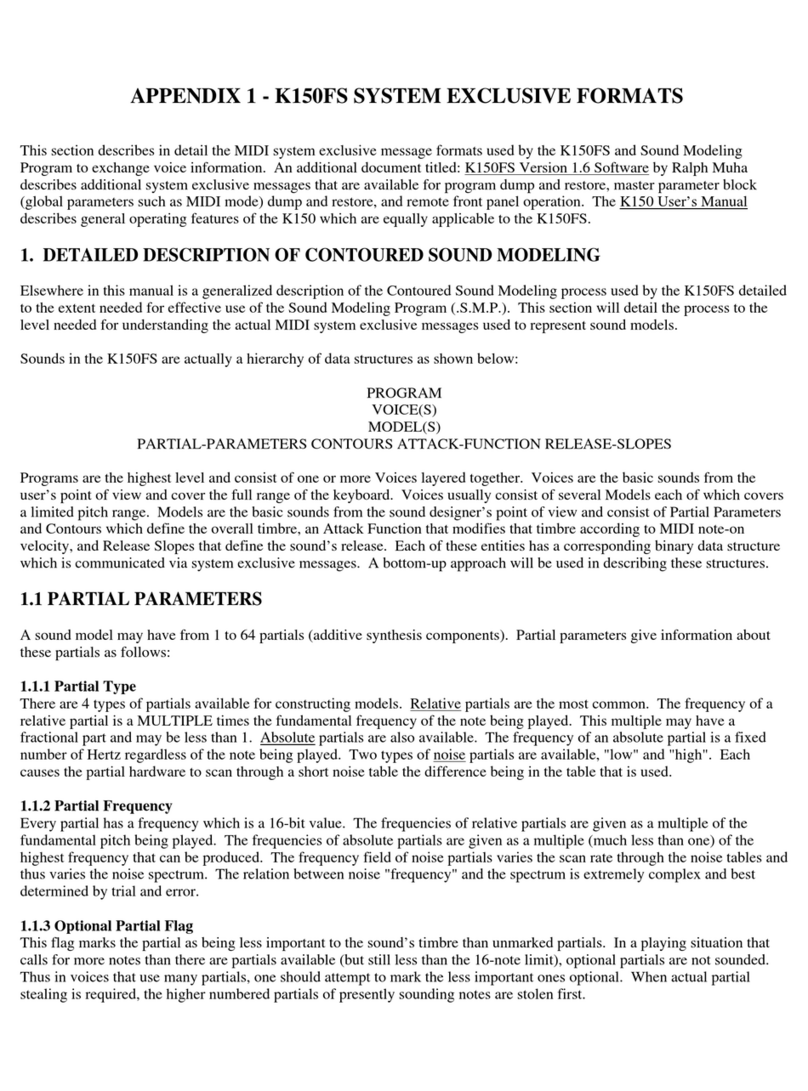
Kurzweil
Kurzweil K150 - APPENDIX 1 Appendix

Kurzweil
Kurzweil K2500 - PERFORMANCE GUIDE REV F PART NUMBER 910252 CHAP... manual
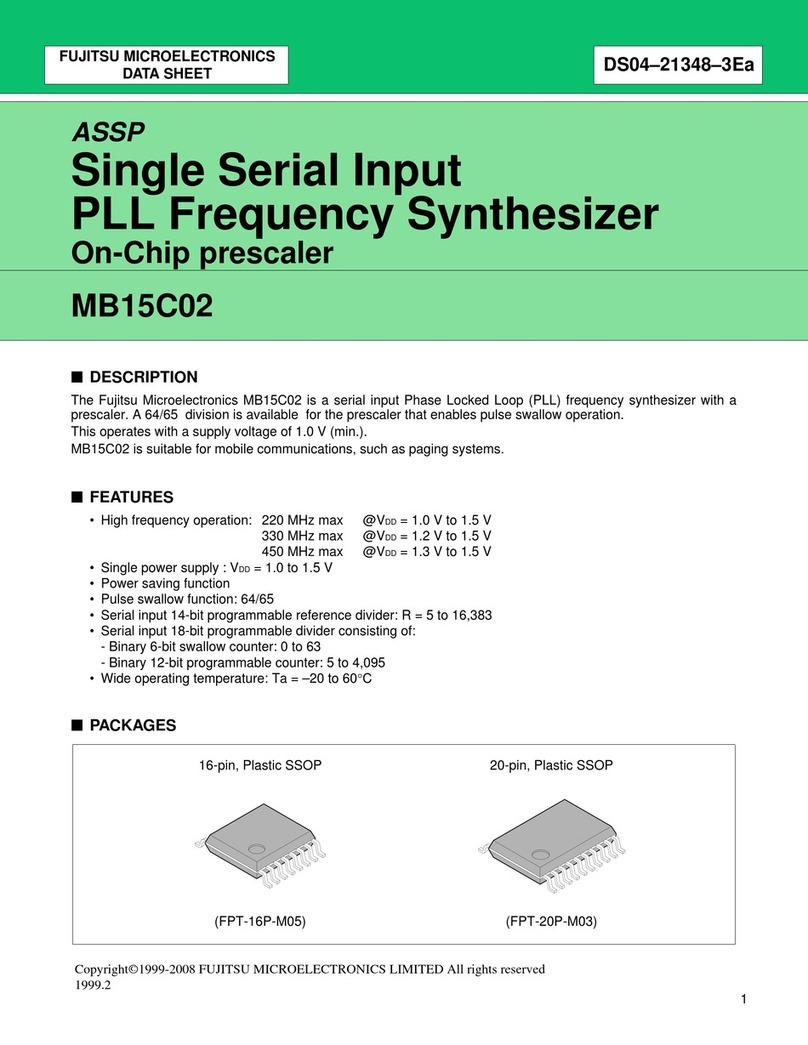
Fujitsu
Fujitsu MB15C02 datasheet

Elby Designs
Elby Designs EURO SERGE ASM301 Construction guide
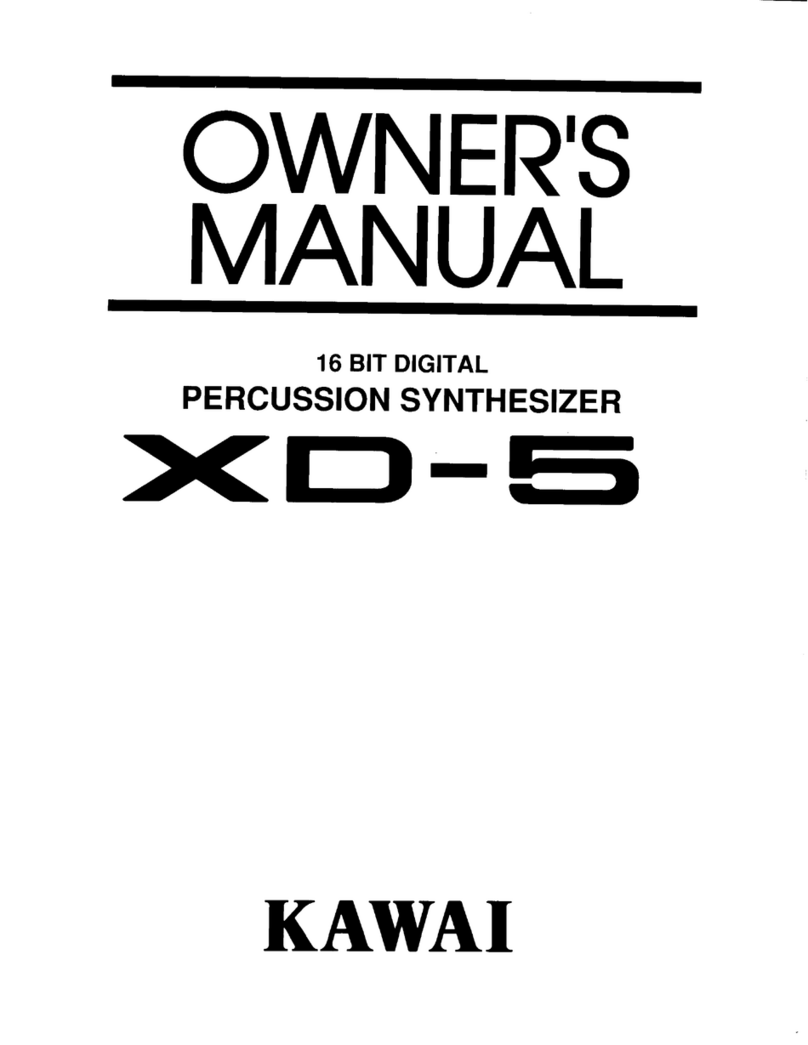
Kawai
Kawai 16 Bit Digital Percussion Synthesizer XD-5 owner's manual
